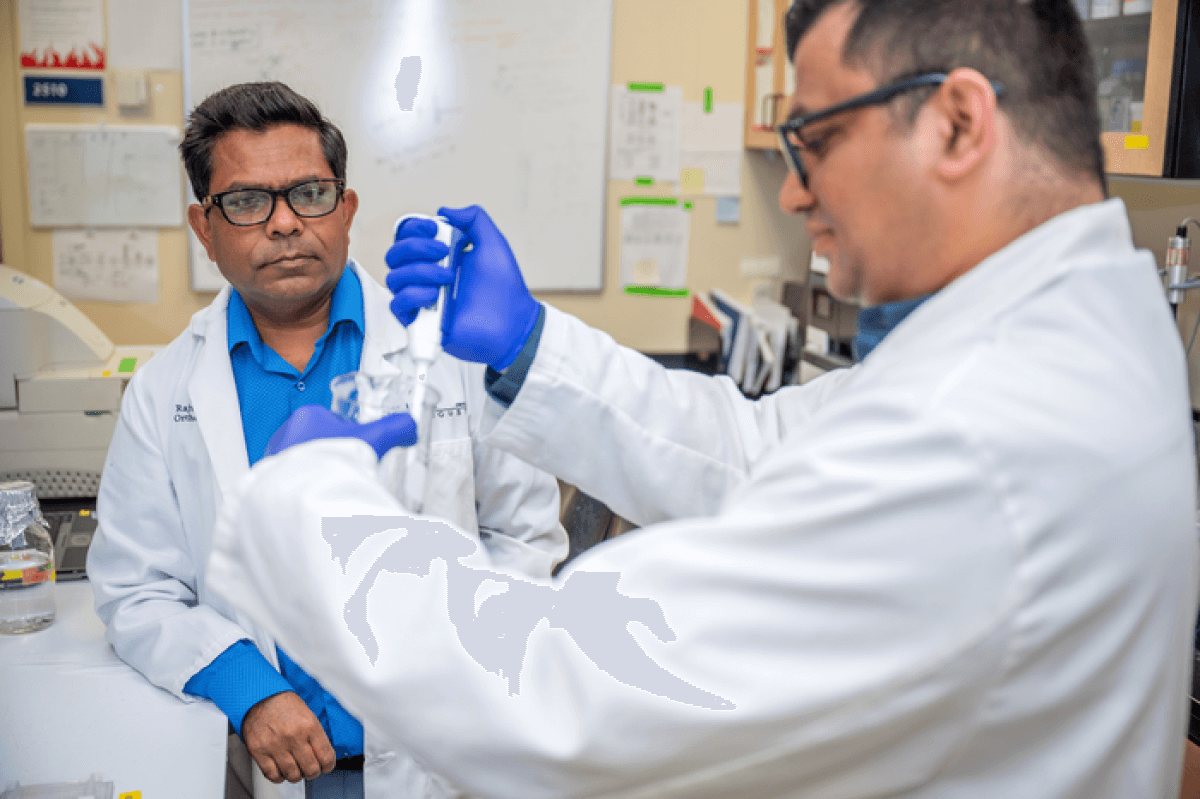AUGUSTA, Ga. — Older adults often experience a host of complications associated with aging, such as bone and muscle loss. Scientists say our bodies produce microRNA that contribute to these problems. Now, a team from Augusta University reports that inhibiting one specific molecule might help aging bodies maintain their health and vitality.
This particular RNA, called microRNA-141-3p, is linked to several of the big health issues that older adults typically face.
“When we age in all these complications like chronic inflammation, muscle loss, bone loss, this microRNA is elevated,” says Sadanand Fulzele, DVM, PhD, aging researcher in the Department of Medicine at the Medical College of Georgia at Augusta University, in a media release. “We wanted to suppress it.”
The team used mice that were genetically engineered to mimic the health of humans in their 60s, treating them for three months with twice-weekly subcutaneous injections of antagomir, an engineered molecule designed to shut off microRNA. They examined changes that occurred in the blood, spleen, bone, and muscle.

Additionally, they discovered that microRNA-141-3p was able to regulate genetic expression of AUF1, a “good” gene with several critical roles such as regulating the stability of messenger RNA. AUF1 even protects younger people from overproducing pro-inflammatory products like IL-6, which leads to chronic, harmful inflammation in the body. However, when there is increased microRNA-141-3p, there is less of this good gene. By blocking it, levels of AUF1 can increase and this reduces inflammation in the body.
Inflammation is a huge problem regardless of the age of the person experiencing it. Fueled by stress in the body, it can ultimately lead to serious problems like cancer and heart disease. High levels of inflammation are also a sign that the body is under strain and is weakening. As such, Fulzele’s goal is to discover ways to prevent damage rather than trying to bring the body back to normal.
He looks ahead to exploring how repressing the microRNA impacts other age-related concerns like cognition, as well as long-term antagomir use implications. Over the three-month period of this study, his team didn’t observe any adverse side-effects from its use.
The team’s findings are published in the journal Aging and Disease.
RNA 101: What is it?
RNA, short for ribonucleic acid, is a molecule that’s kind of like a recipe book for our cells. It’s a long chain made up of smaller building blocks called nucleotides. Our cells use RNA to read the information stored in our DNA, which is like the master recipe book, and help turn that information into proteins.
Proteins are the workhorses of our cells, performing a huge variety of tasks like building and repairing tissues, carrying messages between cells, and fighting off invaders like viruses. To make this happen, RNA goes through a process called “transcription.” Think of it like photocopying a recipe from the master recipe book (DNA) and taking that copy to the kitchen (the cell) to make the meal (the protein). This way, the original DNA stays safe and unharmed, while RNA gets the job done.
So, in simpler terms, RNA is like a messenger that carries instructions from our DNA to other parts of the cell to create proteins, which keep our bodies functioning properly.
You might also be interested in:
- Common painkillers like ibuprofen and naproxen can make arthritis inflammation even worse
- Big doses of omega-3 supplements can fight off inflammation and slow aging
- ‘Fountain of youth’ pill on the horizon after scientists slow aging in yeast


“It is appointed unto man once to die, and after this judgment.” (Heb. 9:27). We all die and will be judged. All have broken God’s commandments and stand condemned (Exo. 20). “Repent, therefore, and be converted that your sins may be taken away.” (Acts 3:19)
So did the mice live longer?
A lot of people are already dying from “scientists” messing with their mRNA. I think I’ll pass on this one, and comtinue with my anti-inflammatory and adult-stem-cell-producing reparative food supplements.
Sounds encouraging, unraveling the causes of aging and getting to its basis.
It sounds like this could actually b3 a simple approach to actually inhibiting the effects of aging if not aging itself.
So when will many of these compounds be available for sale?
Numerous articles about new things being discovered yet none are ever available